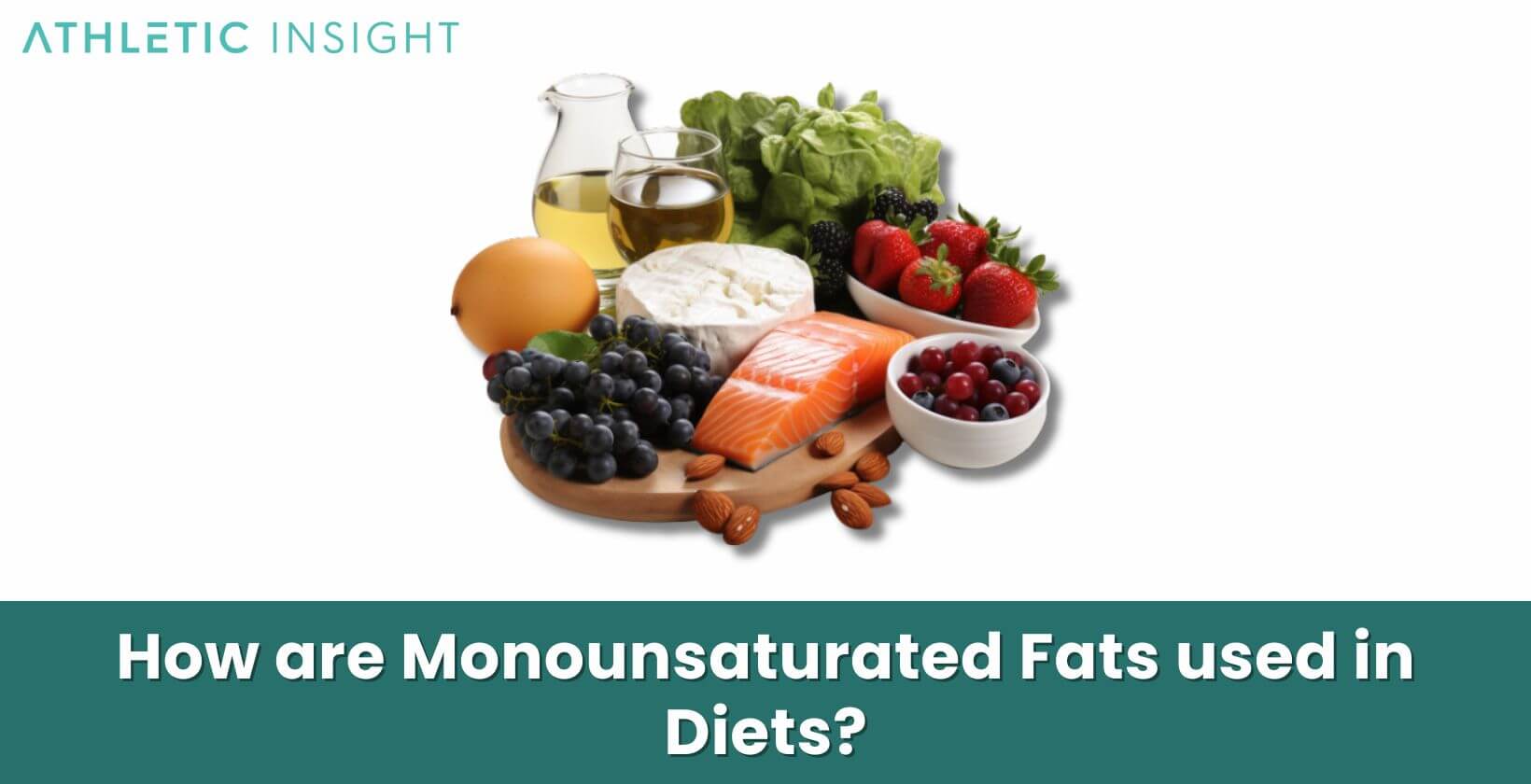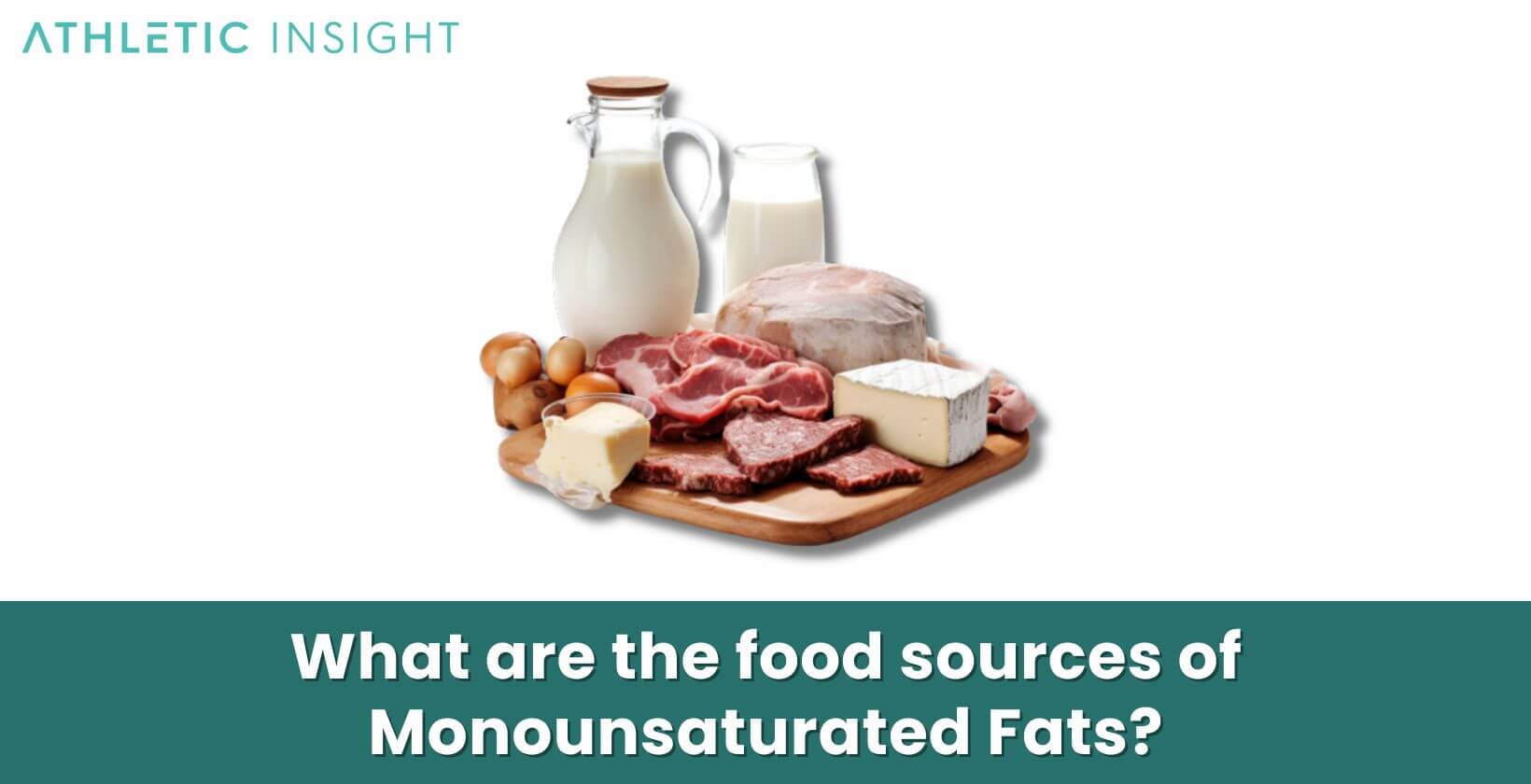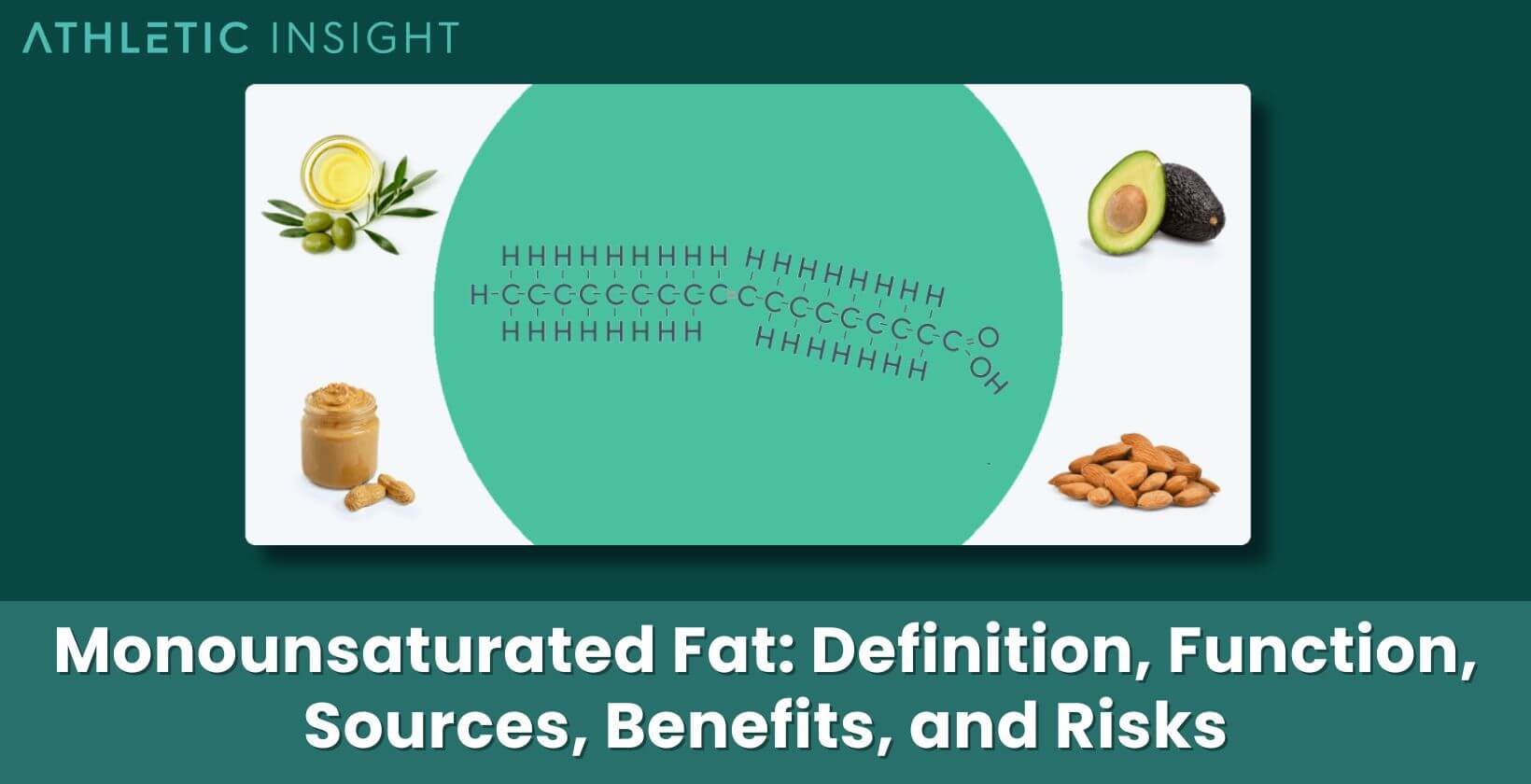Monounsaturated fats occupy an essential role in the realm of nutrition. These unique compounds, integral components of a balanced diet, are pivotal in maintaining one’s health and well-being. Understanding their function, sources, benefits, and potential risks can provide invaluable insights and guide individuals towards making informed dietary decisions.
Present in various foods, monounsaturated fats are known for their health-promoting properties. They are often touted as “good fats” due to their role in reducing harmful cholesterol levels and providing essential nutrients. Read on to delve deeper into the world of monounsaturated fats.
What is Monounsaturated Fat?
Monounsaturated fats are a type of dietary fat, characterized by having one double bond in their fatty acid chain. They remain liquid at room temperature but start to solidify when chilled, distinguishing them from other types of fats.

The presence of the double bond influences the fat’s physical properties and potential health impacts. A diet rich in monounsaturated fats is considered beneficial due to their association with improved heart health and other potential health benefits.
Is Monounsaturated Fat a healthy fat?
Yes, monounsaturated fats are classified as healthy fats. Their characteristic single double bond allows them to contribute positively to one’s health, particularly in relation to heart wellness.
These fats aid in reducing low-density lipoprotein (LDL) cholesterol levels, often labeled as “bad” cholesterol. High levels of LDL cholesterol can lead to plaque accumulation in the arteries, which could culminate in heart disease. Therefore, consuming foods rich in monounsaturated fats can be part of a heart-healthy diet.
Is Monounsaturated Fat worse than Saturated Fat?
No, monounsaturated fat is not considered worse than saturated fat. These saturated fats, known for their lack of double bonds, can raise the level of LDL cholesterol, potentially leading to a higher risk of heart diseases and stroke.
Monounsaturated fats, on the other hand, help lower these risks by reducing LDL cholesterol levels and increasing high-density lipoprotein (HDL) cholesterol, often referred to as “good” cholesterol. Thus, they are viewed as a healthier fat option compared to saturated fats.
What is the function of Monounsaturated Fat?
Monounsaturated fats serve crucial roles in the body. Beyond being a source of energy, they contribute to the structure and flexibility of cell membranes, aiding in nutrient absorption and facilitating nerve impulses.
These fats also carry fat-soluble vitamins A, D, E, and K through the bloodstream. Monounsaturated fats also provide the body with nutrients that maintain many of its functions, solidifying their necessity in one’s diet.
What is the importance of Monosaturated Fat in Nutrition?
Monounsaturated fats hold paramount importance in nutrition. They serve as an energy source, provide essential nutrients, and support the absorption of vitamins. Consuming these fats is necessary as the body cannot produce them on its own.
These fats also contribute to heart health by lowering LDL cholesterol levels. So, including a suitable amount of monounsaturated fats in one’s diet can contribute to overall wellness and potentially reduce the risk of chronic diseases.
How are Monounsaturated Fats used in Diets?
Monounsaturated fats find their place in many dietary patterns due to their health-promoting properties. They are often incorporated in meals as cooking oils, salad dressings, or toppings.

Many popular diets, such as the Mediterranean diet, emphasize the consumption of monounsaturated fats. Such diets are associated with a variety of health benefits, including heart health, weight management, and improved longevity.
What type of Diet uses Monounsaturated Fats?
The Mediterranean diet is a primary example that heavily uses monounsaturated fats. This dietary pattern, inspired by the eating habits of Greece, Italy, and other Mediterranean countries, encourages the consumption of plant-based foods, healthy fats, whole grains, and lean proteins.
This type of diet advocates for the use of olive oil, a rich source of monounsaturated fats, as the principal fat. It also includes other monounsaturated fat sources like avocados, nuts, and seeds. These foods help reduce harmful cholesterol levels and contribute to a heart-healthy diet.
Are Monounsaturated Fats causing weight gain?
No, monounsaturated fats are not directly linked to weight gain. While they are high in calories, like all dietary fats, they do not necessarily contribute to weight gain more than other nutrients. Balanced intake is key.
When consumed in moderation and used to replace saturated fats or trans fats, monounsaturated fats can contribute to a healthy eating pattern and might even support weight loss or weight management efforts due to their satiety-inducing properties. So, is monounsaturated fat bad? No, not in moderation.
What are the food sources of Monounsaturated Fats?
Monounsaturated fats can be found in a multitude of food sources. Prominent monounsaturated fat examples include certain oils like olive oil, canola oil, and peanut oil. Nuts, such as almonds, peanuts, and cashews, are also excellent sources of these fats.

Other foods rich in monounsaturated fats include avocados, seeds like pumpkin seeds and sesame seeds, and some animal-based products, including red meat and whole milk products. Consuming a diverse range of these monounsaturated fat foods can help ensure adequate intake levels.
- Nuts
- Olives
- Canola Oil
- Sesame Oil
- Peanut Oil
- Red Meat
- Safflower Oil
- Avocados
- Whole Milk Products
1. Nuts
Nuts, such as almonds, cashews, and peanuts, are rich in monounsaturated fats. They are nature’s bite-sized nutrient powerhouses, offering a substantial amount of these health-promoting fats.
Almonds, for instance, contain approximately 9 grams of monounsaturated fats per ounce. Besides being a good source of monounsaturated fats, nuts also provide a host of other nutrients including fiber, protein, and various essential vitamins and minerals.
2. Olives
Olives, a staple in Mediterranean cuisine, are another bountiful source of monounsaturated fats. These small fruits are not just a flavorful addition to dishes, but also carry a wealth of nutritional value.
A serving of olives, about 100 grams, contains approximately 11 grams of monounsaturated fats. The extraction of these olives produces olive oil, another excellent source of monounsaturated fats, cherished for its myriad health benefits.
3. Canola Oil
Canola oil, derived from the seeds of the canola plant, is one of the most commonly used cooking oils worldwide. It is lauded for its health benefits and versatility in culinary applications.
Approximately 62% of the fat content in canola oil is monounsaturated fats. The high smoke point of this oil makes it suitable for various cooking methods, including frying and sautéing, making it a convenient way to incorporate monounsaturated fats into a diet.
4. Sesame Oil
Sesame oil, a flavorful oil extracted from sesame seeds, is another valuable source of monounsaturated fats. It is commonly used in Asian and Middle Eastern cuisines, adding a unique flavor to dishes.
This oil contains a significant amount of monounsaturated fats, with around 40% of its total fat content falling into this category. Aside from its monounsaturated fat content, sesame oil is also noted for its antioxidants and anti-inflammatory properties.
5. Peanut Oil
Peanut oil, obtained from pressed, steam-cooked peanuts, is another oil rich in monounsaturated fats. With its mild flavor and high smoke point, it is a preferred oil for frying and deep-frying.
Approximately 46% of the fat in peanut oil is monounsaturated, contributing to its healthy profile. It is also resistant to rancidity, giving it a longer shelf life compared to some other oils.
6. Red Meat
Red meat, including beef and lamb, contains monounsaturated fats. This category of meat is known for its rich flavor and high nutrient content, including protein, iron, and several essential vitamins and minerals.
The monounsaturated fat content varies by the specific type and cut of meat, as well as the animal’s diet and lifestyle. For instance, a 100-gram serving of beef steak contains approximately 5 grams of monounsaturated fats. It’s essential, however, to balance consumption of red meat with other lean protein sources and plenty of fruits and vegetables.
7. Safflower Oil
Safflower oil, extracted from the seeds of the safflower plant, is another excellent source of monounsaturated fats. It’s frequently used in cooking for its neutral flavor and high heat tolerance.
High-oleic safflower oil, in particular, is very high in monounsaturated fats, with about 75% of its total fat content falling into this category. This type of safflower oil is also noted for its stability, making it suitable for a variety of culinary applications.
8. Avocados
Avocados, native to South Central Mexico, are prized for their creamy texture and rich flavor. These unique fruits are densely packed with monounsaturated fats.
A single medium-sized avocado provides approximately 20 grams of monounsaturated fats. Beyond their monounsaturated fat content, avocados also offer a multitude of other nutrients, including fiber, potassium, and vitamins C, E, and K, making them a nutritious addition to many dishes.
9. Whole Milk Products
Whole milk products, such as whole milk and cheese, also contain monounsaturated fats. These dairy products are recognized for their rich taste and contribution to overall nutrient intake.
The content of monounsaturated fats in whole milk products varies. For instance, a cup of whole milk contains around 2 grams of these fats. In addition to monounsaturated fats, these products provide a range of other essential nutrients like protein, calcium, and vitamins D and B12.
Is butter a Monounsaturated Fat?
No, butter does contain monounsaturated fats, but it is not considered a primary source. This is because the predominant type of fat in butter is saturated fat.
An average pat of butter, weighing about 14 grams, contains nearly 3 grams of monounsaturated fat. However, it also contains around 7 grams of saturated fat. Hence, while butter does contain monounsaturated fats, its higher saturated fat content necessitates moderate consumption.
Is cheese considered a Monounsaturated Fat?
No, cheese is not classified as a monounsaturated fat, but it does contain some. The primary type of fat in cheese is saturated fat, but the specific amounts of each type of fat can vary depending on the type of cheese.
For instance, cheddar cheese contains both saturated and monounsaturated fats. A one-ounce serving of cheddar cheese contains roughly 5 grams of saturated fat and around 3 grams of monounsaturated fat. Despite its fat content, cheese is also a good source of protein and calcium, demonstrating the complexity of dietary choices and the balance required for optimal health.
What is the recommended daily intake amount of Monounsaturated Fats?
The Dietary Guidelines for Americans suggests that 20% to 35% of your daily calories should come from fats, with an emphasis on unsaturated fats, including monounsaturated fats. This recommendation translates to about 44 to 77 grams of fat for a person consuming a 2,000-calorie diet.
It’s important to note that these numbers are a general guide and individual requirements can vary. Factors such as age, sex, activity level, and overall health can influence a person’s specific nutritional needs.
How is the Monounsaturated Fats intake determined?
The intake of monounsaturated fats, like other nutrients, is determined by a person’s total energy requirements and the specific balance of nutrients in their diet. Nutrition experts suggest prioritizing monounsaturated and polyunsaturated fats over saturated and trans fats for a healthier dietary pattern.
Various factors come into play, including individual health status, physical activity level, age, and nutritional needs. For instance, an active young adult may have higher energy requirements and thus a higher total fat allowance than a sedentary older adult. The key is achieving a balance that supports overall health while fitting into one’s lifestyle and preferences.
What are the health benefits of Monounsaturated Fats?
Monounsaturated fats can offer several health benefits when incorporated into a balanced diet. For starters, they can help lower levels of low-density lipoprotein (LDL) cholesterol, often referred to as “bad” cholesterol, while potentially raising levels of high-density lipoprotein (HDL), the “good” cholesterol.
These fats may also aid in regulating blood sugar levels, making them beneficial for individuals with type 2 diabetes. Monounsaturated fats can also help reduce inflammation, a key factor in many chronic diseases. Lastly, evidence suggests they may contribute to weight loss and management when replacing saturated or trans fats in the diet.
- Help lower levels of low-density lipoprotein (LDL) cholesterol
- Regulate blood sugar levels
- Reduce inflammation
- Weight loss and management
What are the health risks of Monosaturated Fats?
While monounsaturated fats are generally considered healthy, they still need to be consumed in moderation as part of a balanced diet. Overconsumption of any type of fat, even the healthier varieties, can contribute to weight gain and obesity, due to their high calorie content.
It is also crucial to ensure that intake of monounsaturated fats doesn’t displace other essential nutrients in the diet. It’s also important to consider the overall quality of the food source. Foods high in monounsaturated fats can sometimes also be high in sodium or added sugars, which can detract from their overall health benefits if consumed in excess.
- Overconsumption can contribute to weight gain and obesity
- Foods high in monounsaturated fats can be high in sodium or added sugars
What is the difference between Monounsaturated and Polyunsaturated Fats?
Both monounsaturated and polyunsaturated fats are types of unsaturated fats, deemed healthier than saturated and trans fats. The key difference lies in their chemical structure. Monounsaturated fats have one (“mono”) double bond in their molecular structure, while polyunsaturated fats have more than one (“poly”).
This difference in structure influences their impact on health. Both types can help reduce LDL cholesterol levels, but polyunsaturated fats, particularly omega-3 fatty acids, are particularly known for their heart health benefits. Both monounsaturated and polyunsaturated fats have a place in a healthy, balanced diet.



